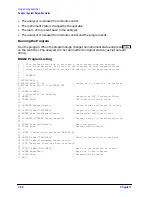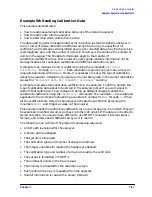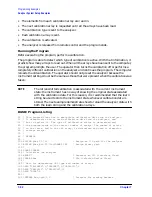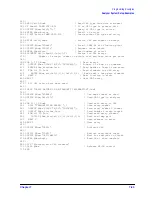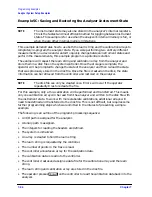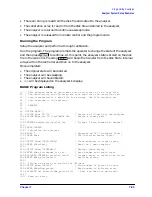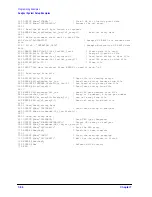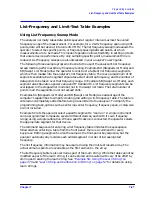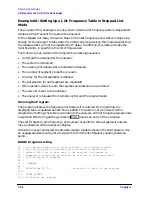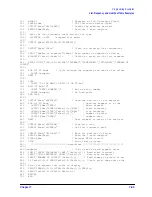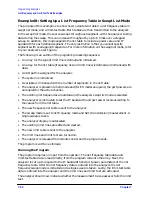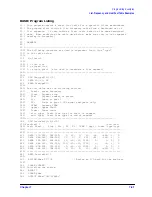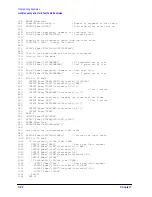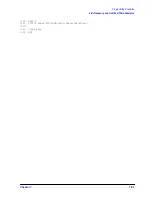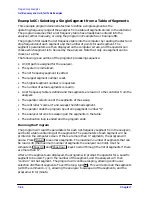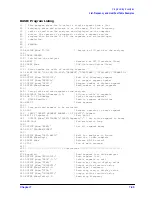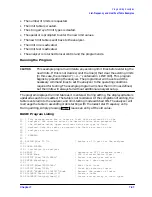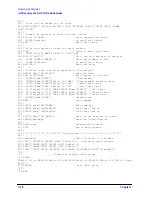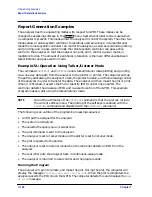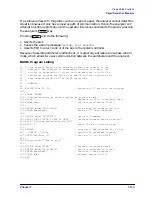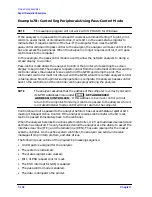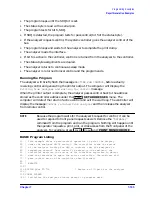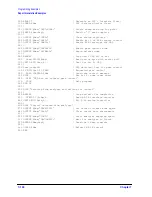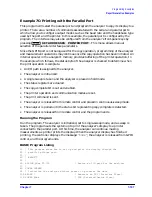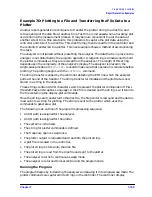
7-94
Chapter 7
Programming Examples
List-Frequency and Limit-Test Table Examples
Example 6C: Selecting a Single Segment from a Table of Segments
This example program demonstrates how to define a single segment as the
operating-frequency range of the analyzer from a table of segments stored in the controller.
The program assumes that a list frequency table has already been entered into the
analyzer, either manually, or using the program in Example 6A or Example 6B.
The program first loads the list frequency table into the computer by reading the start and
stop frequencies of each segment and the number of points for each segment. The
segment's parameters are then displayed on the computer screen, and the operator can
choose which segment is to be used by the analyzer. Note that only one segment can be
chosen at a time.
The following is an outline of the program's processing sequence:
• An I/O path is assigned for the analyzer.
• The system is initialized.
• The list frequency segment is edited.
• The largest segment number is set.
• The highest segment number is requested.
• The number of actual segments is read in.
• A list frequency table is defined and the segments are read in to the controller from the
analyzer.
• The operator selects one of the segments of the sweep.
• The controller “zooms-in” and sweeps the defined segment.
• The operator ends the program by entering segment number “0.”
• The analyzer returns to sweeping all the segments in the table.
• The activation loop is ended and the program ends.
Running the Program
The program will read the parameters for each list-frequency segment from the analyzer,
and build a table containing all the segments. The parameters of each segment will be
printed on the computer screen. If there are more than 17 segments, the program will
pause. Press
to see more segments. The maximum number of segments that can
be read is 30 (the maximum number of segments the analyzer can hold). Use the
computer's
and
keys to scroll through the list of segments if there
are more than 17.
After all the segments are displayed, the program will prompt the operator for a specific
segment to be used. Type in the number of the segment, and the analyzer will then
“zoom-in” on that segment. The program will continue looping, allowing continuous
selection of different segments. To exit the loop, type
. This will restore all the segments
(with the command
ASEG
), allowing the analyzer to sweep all of the segments, and the
program will terminate.
Return
Page Up
Page Down
0
Summary of Contents for 8719ES
Page 15: ...1 1 1 Alphabetical Command Reference ...
Page 293: ...2 1 2 Introduction to Instrument Control ...
Page 310: ...3 1 3 GPIB Programming ...
Page 334: ...4 1 4 Reading Analyzer Data ...
Page 343: ...5 1 5 Data Processing Chain ...
Page 350: ...6 1 6 Error Reporting ...
Page 364: ...7 1 7 Programming Examples ...
Page 502: ...A 1 A Preset Conditions ...
Page 517: ...B 1 B Command Listings ...

